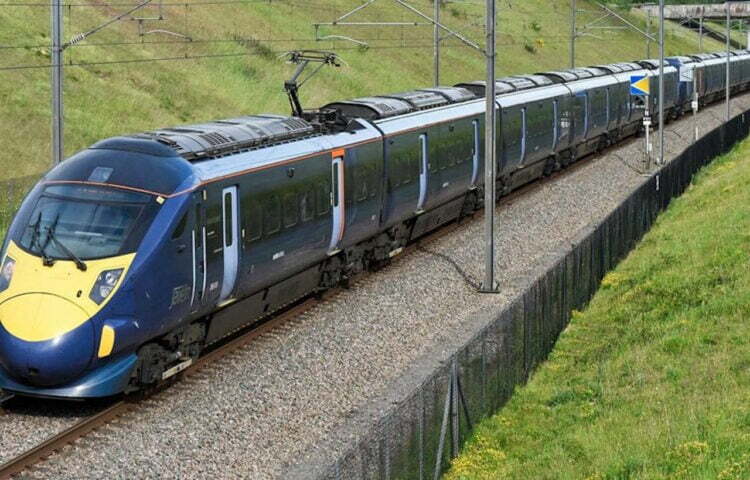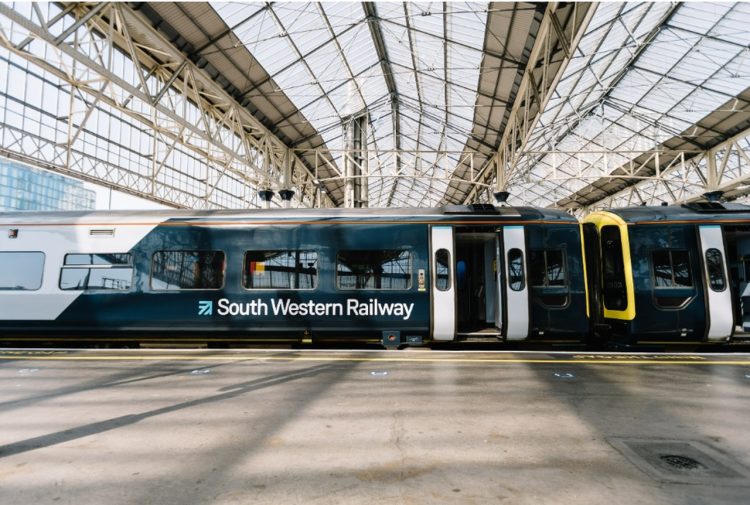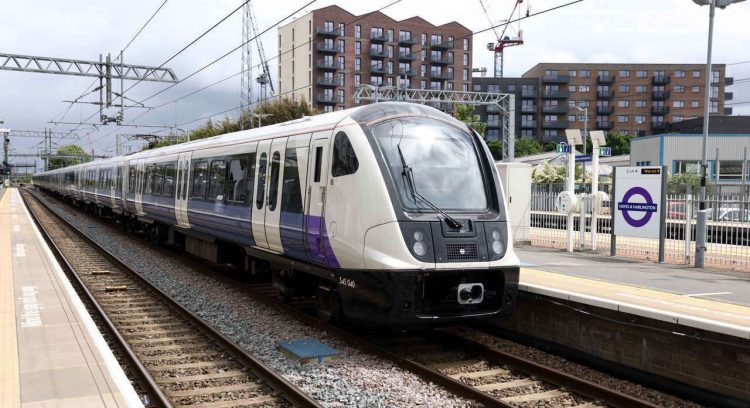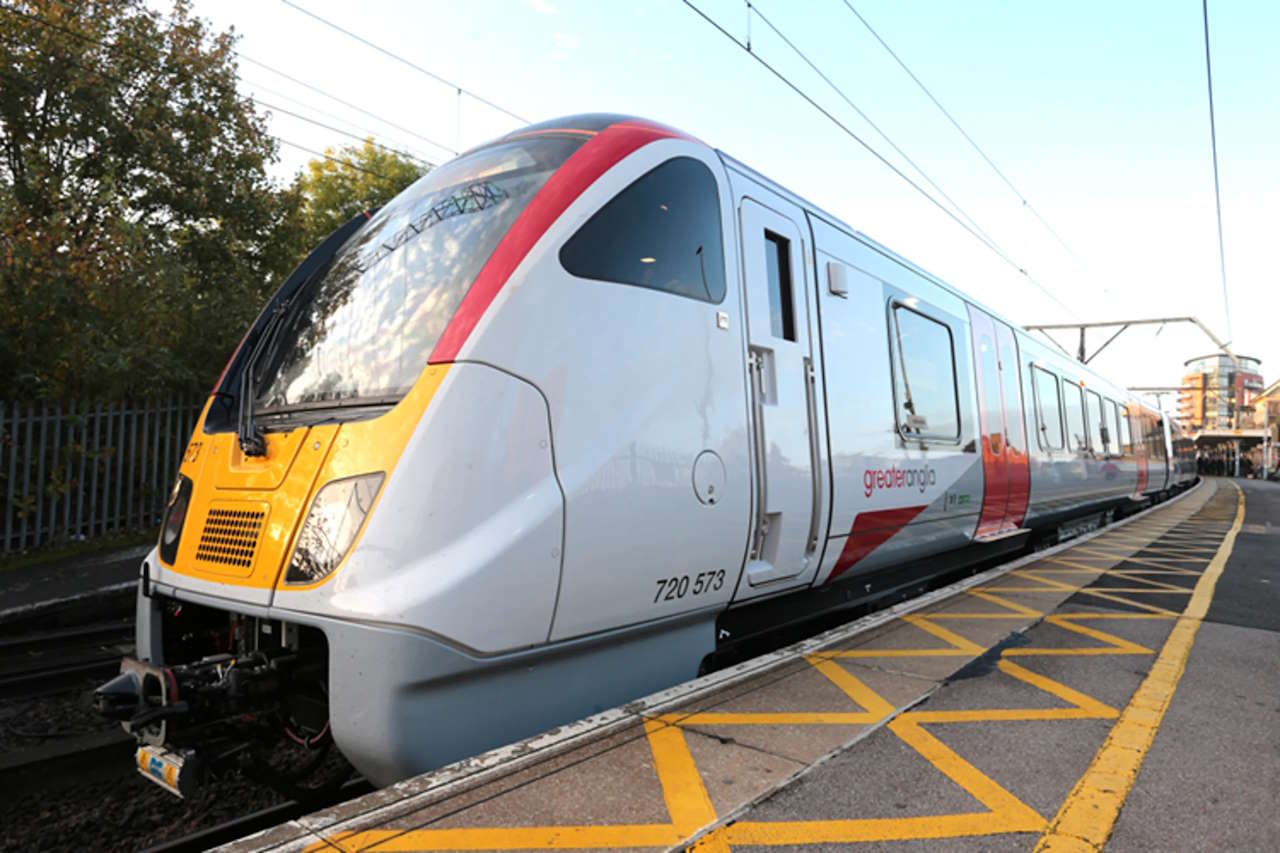In the last ten years, over half (54%) of Britain’s passenger trains have been replaced or upgraded to improve passengers’ journeys.
Significant investments made by operators and fleet owners, including Greater Anglia, Southeastern, South Western Railway (SWR), London North Eastern Railway (LNER), Govia Thameslink Railway (GTR) and Avanti, as well as Angel Trains and Rock Rail include better facilities, new and refurbished trains with increased capacity and better performance.
Carriages have been redesigned to provide more space, better accessibility, more luggage space, and at-seat charging.

More trains now provide at-seat power points, Wi-Fi and better connectivity, whilst over 80% of trains have air conditioning.
The introduction of new trains has enabled the rollout of accessibility features such as level boarding and accessible toilets so that more wheelchair users and people with reduced mobility can travel independently by train.

Greater Anglia’s new fleet of trains built by Stadler includes the first British mainline trains that have level boarding at the national standard platform height, lower floors, and a retractable step at each door.
Passenger groups were involved in the design phase, and they suggested fitting an extra alarm at ground level in each accessible toilet in case anyone falls to the floor.
South Western Railway’s new Arterio trains have regenerative braking and, a first in the UK, fully accessible bioreactor Controlled Emission Toilets (CET) for wheelchair users.
These toilets are used in European countries to biologically and thermally treat waste to produce wastewater that is compliant with EU bathing water standards.
An example of sustainability is the new Class 345 Elizabeth Line trains and Greater Anglia’s Stadler fleet, which use lightweight materials in their construction and use regenerative braking to harness energy during braking and return it to the power network.

London North Eastern Railway’s Azuma trains have reduced diesel consumption by 84% from over 30 million litres to under 5 million litres per year, equivalent to ten Olympic-sized swimming pools, as well as halving total carbon emissions.
Govia Thameslink Railway has introduced new 8 and 12-carriage trains on its Thameslink route that provide capacity for over 1,700 people and can operate on both third-rail and overhead lines, south and north of London.
For the future, Great Western Railway is testing the potential of battery-powered trains that use FastCharge technology to enable reliable, battery-only trains to operate timetable services on branch lines without the need for diesel engines.
London North Eastern Railway’s new tri-mode trains will be able to run on overhead wires, diesel, or battery power, and will help contribute to a reduction in emissions of 67 per cent by 2035.
Daniel Mann, director of rail industry operations at Rail Delivery Group said, “Over the past decade a huge amount of investment has gone into new and refurbished trains for our customers. People’s needs and what they expect on board have changed and we need to adapt to them.
“We have made a huge amount of progress in renewing rolling stock and it shows what can be achieved when all parts of the rail industry are working together. We want to encourage people to travel by train, which is why investment in rolling stock is so vital.”
Rail Minister Huw Merriman said: “New and improved trains are a crucial part of attracting more passengers back to the railways.
“The past decade’s worth of investment has not only significantly bettered our trains but also supported thousands of skilled jobs around the country. This Government has also reaffirmed its commitment to UK rail manufacturing today by providing more clarity to the sector through publishing a pipeline of future requirements for trains.”






Responses
Oh for a MK1 FO or series 3 LMS third class compartment, 3 seats wide with armrests
Recently travelled from Cornwall to Scotland via London, GWR & LNER. Dreadfully uncomfortable so back to flying with Loganair – faster, cheaper and more comfortable.
I’m glad others have mentioned the paper thin upholstery on GWR – I had to stuff a back pack behind me for spinal support.
Cross country are still left with the rotten voyagers
Great to read a success story! Of course alot more to do …
Yes there are new trains but the profits that the leasing companies have made at the expense of tax payers are criminal.
EMR electrics, now rebranded as Luton Airport Express and still running interior life expired, dirty ex-Great Northern EMUs. Apparently the promised refurbishment can’t be delivered because it’s been vetoed by DFT as costing money. Shame.
Ah yes, the GWR Class 802 upgrade – yes they accelerate faster than HSTs. Yes, they are more reliable, but with a bone shakingly awful ride, made even worse by harsh seating, with virtually no padding, designed for continental commuter trains, not six hour journeys from Paddington to Penzance. First class seats are no better, described as “second-class seats, with first class covers“. What a contrast to the first class seats on the HSTs! No buffet, of course and a trolley service, if you are lucky, particularly when travelling in a 5+5 set. Power units underneath 3/5 and 5/9 cars mean that journeys are also mostly noisier than the HSTs with harsh lighting for those trying to work or read. Be careful when reserving a seat as some have no windows at all…. and that’s forgetting the design suspension flaw/weld quality, which lead to cracking in the yaw bar damper after less than three years in service on West Country routes. In contrast GWR continues to run some of the oldest and least loved sets in the country – the 40 year old class 150. What do these have in common with the 802s? GWR’s consistently dirty windows!
Daniel Mann and Huw Merriman’s recent statements are both misleading, and ignore the very real rolling stock procurement and maintenance problems which contribute to the uncomfortable and unreliable train services which travellers in Britain are forced to endure on a regular basis:
1. There is no long-term train procurement policy.
At the moment, future investment in trains is drastically limited by the length of parliamentary sessions. Because all investment is subject to political policy changes, the planning of train vehicle purchases is frequently altered or curtailed by short term financial considerations. Because of this, train manufacturers are reluctant to invest in British factories and staff training.
2. Commercial companies bidding for management contracts for passenger services are discouraged by extremely limiting contract specifications and low levels of rewards. This is why we now have the ludicrous situation in which private companies have to team up with the national rail companies in Europe or Japan, where taxpayers’ money may be borrowed at lower rates. Furthermore, terms of contract discourage expansion through enterprise and imagination.
3. Rail management is subjected to continual micro management and interference by the Department for Transport and the Treasury. Again, short termism and political intervention means that private contractors cannot manage or plan for the future effectively. Intercity passenger companies have been forced to accept the Hitachi 800 series of trains, despite the insistence of D.f.T. on hard, thin seating, limited legroom, harsh lighting, poor window positioning and unreliable toilets.
4. Frequently, the D.f.T. favours bidders for management contracts who propose unnecessary new trains when fleets are already relatively, or even completely, new because financial ‘sleight of hand’ over purchase and subsequent maintenance of trains appears marginally cheaper. A particularly worrying case has been the South West passenger contract, in which a new fleet of Siemens trains was terminated and passed to the South Eastern contractors in favour of another new Alstom fleet. The complicated and time wasting procedure of changing a perfectly good fleet and discarding the maintenance procedure, at great inconvenience to passengers, was disregarded. Four years have passed since the delivery of the first Alstom trains, and continual software problems have means that these trains have not turned a wheel in passenger service. There have been a number of other wasteful fleet changes.
Every long distance replacement has been significantly inferior to the trains they replaced.
They’ve all got fewer carriages, less legroom, more uncomfortable, fewer lavatorys, etc etc.
And still they are ordering new rolling stock with not enough carriages.
Passenger comfort is irrelevance.
Spot on. The railways are a shambles. Management still get their bonuses thanks to ministers lowering the expectations on punctuality/cancellations etc, whilst the passengers suffer.
Biggest issue is the unions…always going on strike for even more money and less work..
Part of the problem is that the decision makers don’t use the trains, so they’re not bothered whether they are comfortable or not. BR rolling stock designers had privileged travel; it was probably in their interests to build a decent coach.
So what about Northern Rail?? We have the class 156 on the Cumbria Coast line and 156/58 on the Carlisle to Newcastle line. When is the investment going to stop in London and come up to the North including Cumbria??
Well come to the Highlands and see the new trains oh its the old HST and new 156 oh they are old as well they break down all time no heating in wi ter and ac does not work in summer
Wish XCountry had the ‘old’ HST’s. Windows aligned with (comfortable) seats – and above all, capacity. Now – and for the foreseeable future – it’s five (and often four) car ‘Voyagers’ approaching 30 years in service on the longest journies in the UK, from Scotland to Devon & Cornwall and vice-versa, with no plans for replacements – just others ‘cascaded’ from Avanti.. Not mentioned in this article, obviously.